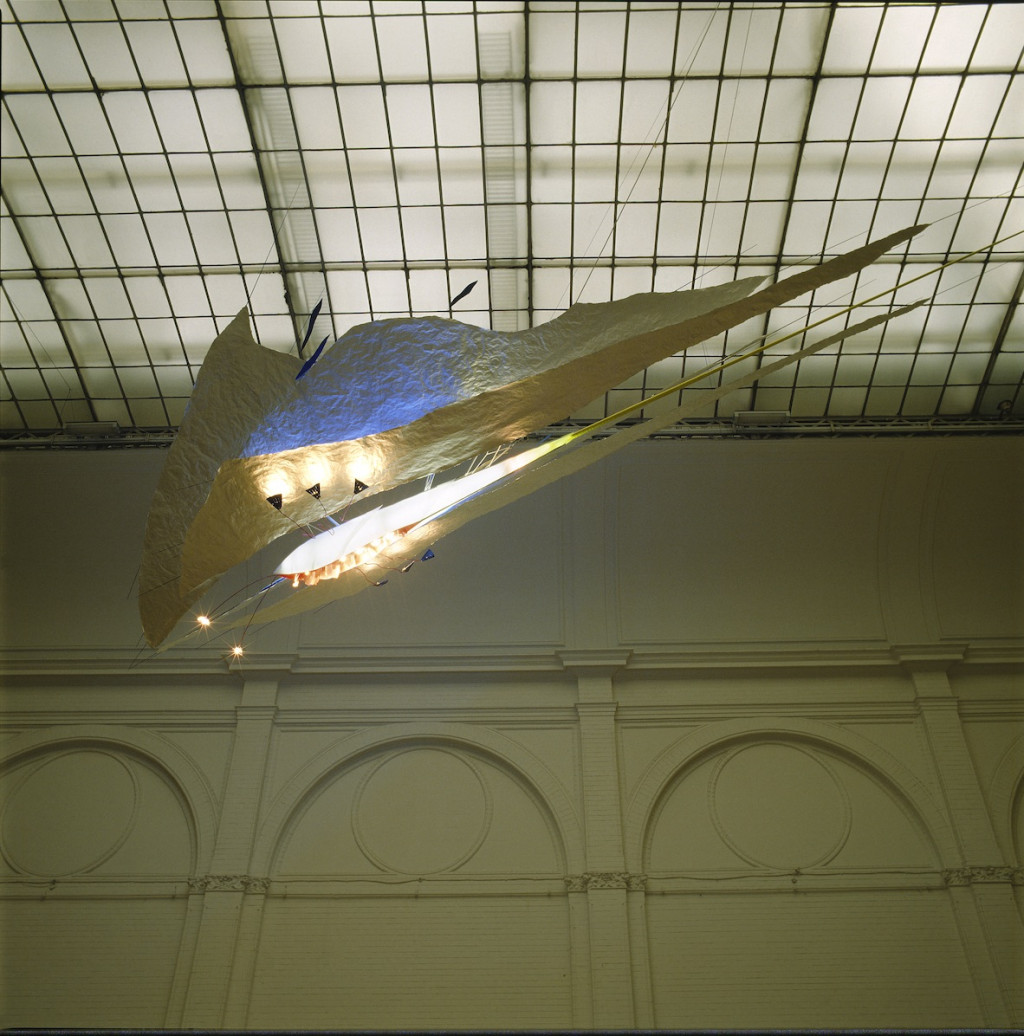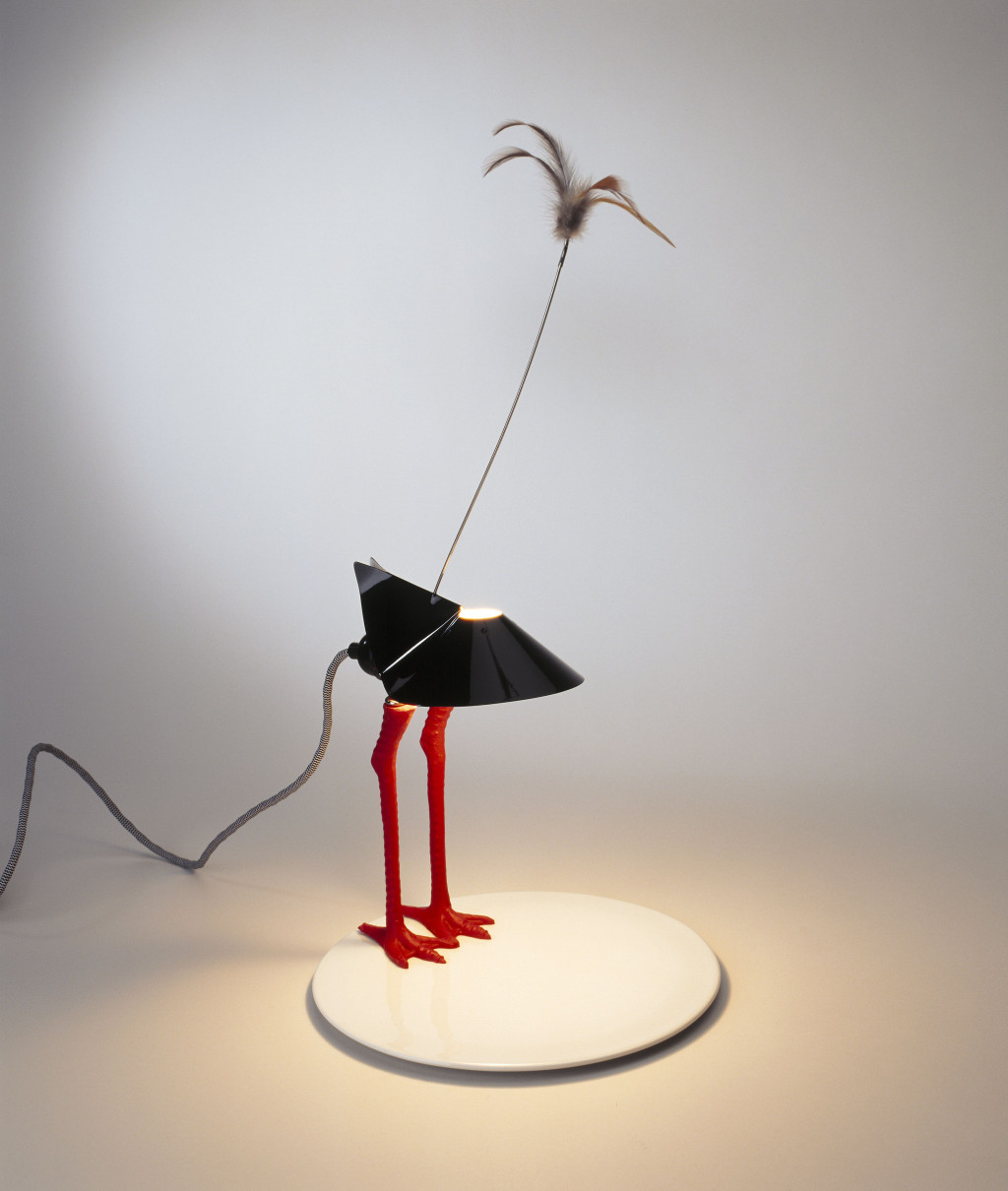Ingo Maurer
In Memoriam
News — Oct 25, 2019
After working as a graphic designer, Maurer started with designing lamps in the 60s. The Bulb, an enlarged version of a light bulb inside it that functions as the source of light, was one of his first designs and referred to pop art, that was emerging at that moment. From 1969 he produced the lamp himself. In the decades that followed, by further developing his design studio and factory, he became an important player in the international world of lighting design.
Maurer designed with humor: a table lamp with a thin black shade fanning out and a kind of spear he called Don Quixote (1989) and a light bulb with two small wings attached to it got the title Lucellino (1992). This last word is a contraction of luce, light, and Lucellino, small bird.
Besides humor you can often also find poetry in his work; the Bibibibi table lamp (1982) is an endearing ostrich, who seems to have lost most of his feathers. Maurer found the inspiration for this design in two remaining red plastic legs, that he had found when he was looking for a piece of decoration for a wedding car. With Fly Candle Fly (1996) by Georg Baldele, a candle hanging on thin threads which burns out in 20 hours, Maurer added a piece to his lighting collection that created a special atmosphere. In 2013 Maurer, together with Moritz Waldemeyer, developed a more sustainable LED version of this design, Flying Flames.
However, who might have thought that Maurer was only interested in visual jokes, is wrong, as he was one of the most innovative lighting designers of the past 50 years. In the beginning of the 80s, he developed YaYaHo, a system with which all kind of halogen elements could be easily hung from two low tension current cables, that were stretched from wall to wall. He also played an important role in the development of touchtronics, by which lamps can be lit, dimmed or put out by just touching them.

During his whole career, Maurer not only worked on industrial products, but also on many commissions for public buildings, company buildings and private homes. The Stedelijk Museum owns such a special piece: the Flatterby Spezial from 1992, which was made for the Stedelijk during the preparations for the exhibition about his work Light light (1993). Of course the poster by Anthon Beeke features a kind of lamp, and the catalogue for the exhibition is a lamp itself, designed by the then curator Reyer Kras, a designer himself. A trade version of this lamp is still in production at Ingo Maurer’s. It is one of the two links between Maurer’s company and the Netherlands; another design that has been produced there already for a long time is the Delight (1980) by Martijn Wegman and Frans van Nieuwenborg.
Besides the mentioned Bulb, Don Quixote, Bibibibi and Flatterby, seven other designs by Maurer have been added to the Stedelijk collection. As a tribute some of them have been exhibited in the museum as from Tuesday 29 October.
Ingeborg de Roode
Curator Industrial Design


